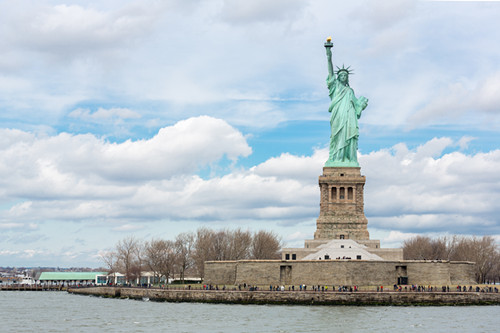On May 14, 2025, the U.S. Environmental Protection Agency (EPA) announced on its decision to retain the existing Maximum Contaminant Levels (MCLs) for perfluorooctanoic acid (PFOA) and perfluorooctanesulfonic acid (PFOS) in drinking water established in 2024, while extending the compliance deadline for public water systems from 2029 to 2031. Concurrently, the agency proposed to revoke standards for PFHxS, PFNA, HFPO-DA (GenX chemicals), and PFBS mixtures, initiating a re-evaluation process. A new "PFAS OUT Program" was unveiled to bolster technical support.

Background
In April 2024, EPA issued the first legally enforceable National Primary Drinking Water Regulation (NPDWR) for six per- and polyfluoroalkyl substances (PFAS):
| Compound | Final MCLG | Final MCL (enforceable levels) |
|---|---|---|
| PFOA | Zero | 4.0 parts per trillion (ppt) (also expressed as ng/L) |
| PFOS | Zero | 4.0 ppt |
| PFHxS | 10 ppt | 10 ppt |
| PFNA | 10 ppt | 10 ppt |
| HFPO-DA (commonly known as GenX Chemicals) | 10 ppt | 10 ppt |
| Mixtures containing two or more of PFHxS, PFNA, HFPO-DA, and PFBS | 1 (unitless) Hazard Index | 1 (unitless) Hazard Index |
Hazard Index = (PFNA level/PFNA benchmark) + (PFHxS level/PFHxS benchmark) + (GenX level/GenX benchmark) + (PFBS level/PFBS benchmark)
Key requirements
- Public water systems must complete initial PFAS monitoring by 2027 and report results to consumers.
- Systems exceeding MCLs must implement mitigation plans by 2029.
- Violations post-2029 require corrective actions and public notifications.
Policy Adjustments
1. Extended Compliance Timeline for PFOA/PFOS
EPA reaffirmed the 4 ppt MCLs for PFOA/PFOS but proposed extending the compliance deadline to 2031 (originally 2029) due to operational challenges reported by water systems. A draft rule will be released in fall 2025, with finalization expected by spring 2026. EPA Administrator Lee Zeldin emphasized: "This flexible approach balances health protections with practical implementation timelines, while ensuring polluters remain accountable."
2. Revisions to Four PFAS Standards
EPA initiated proceedings to revoke MCLs for PFHxS, PFNA, HFPO-DA, and PFBS mixtures, citing procedural requirements under the Safe Drinking Water Act. Existing standards for PFOA/PFOS remain unaffected.
3. Enhanced Support via PFAS OUT Program
The new program prioritizes rural and small communities through:
- Free technical assistance: Water testing, system design, operator training, and funding application support.
- 1 billion infrastructure funding: Allocated through the Bipartisan Infrastructure Law for state-level PFAS mitigation.
- Collaborative networks: Partnerships with technology providers and tribal governments to develop cost-effective solutions.
The EPA’s latest policy shift highlights the complexity and long-term nature of PFAS governance. On one hand, by extending compliance deadlines, strengthening technical assistance, and forging a coordinated support network, regulators are demonstrating a pragmatic effort to balance public-health protection with on-the-ground realities. On the other, the temporary withdrawal of four PFAS limits and the launch of a re-evaluation process risk fueling public concern that oversight of emerging contaminants is lagging.
If you need any assistance or have any questions, please get in touch with us via service@cirs-group.com.
Further Information

